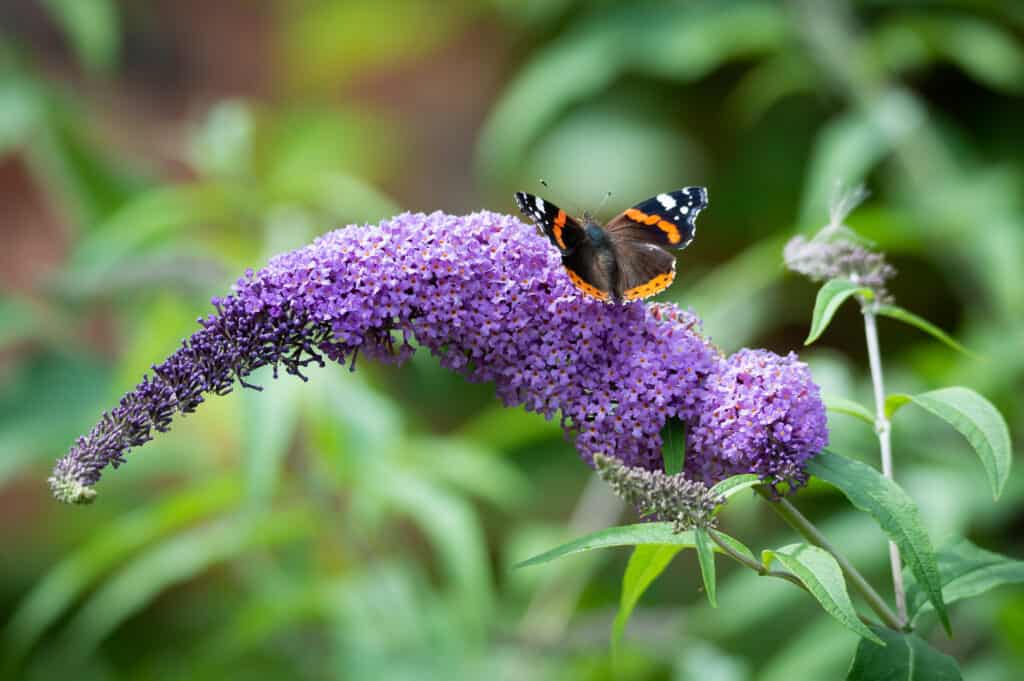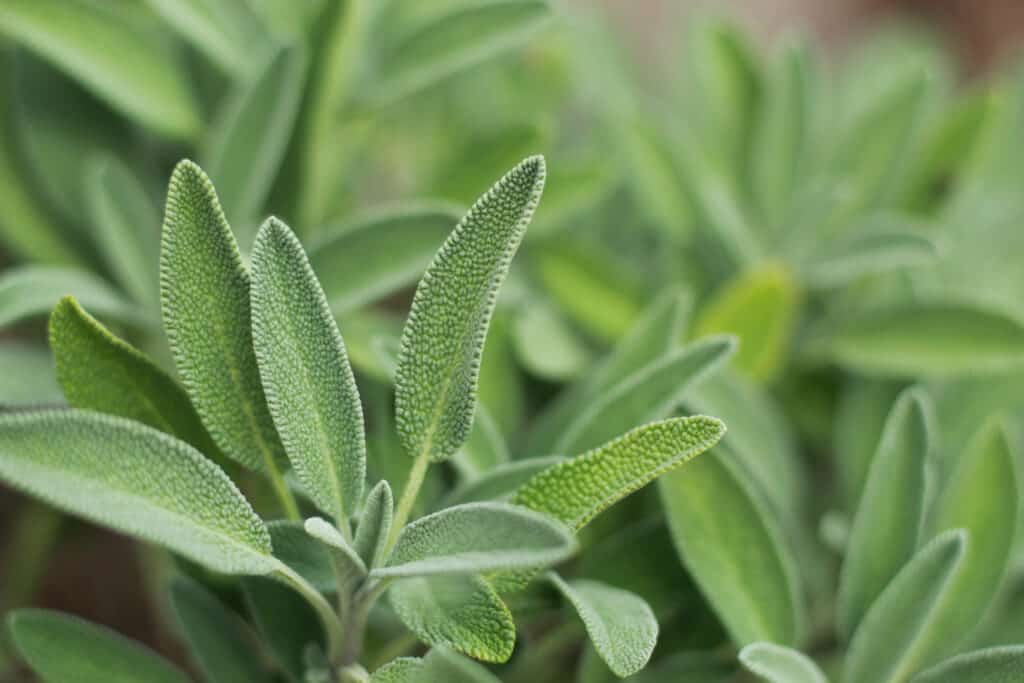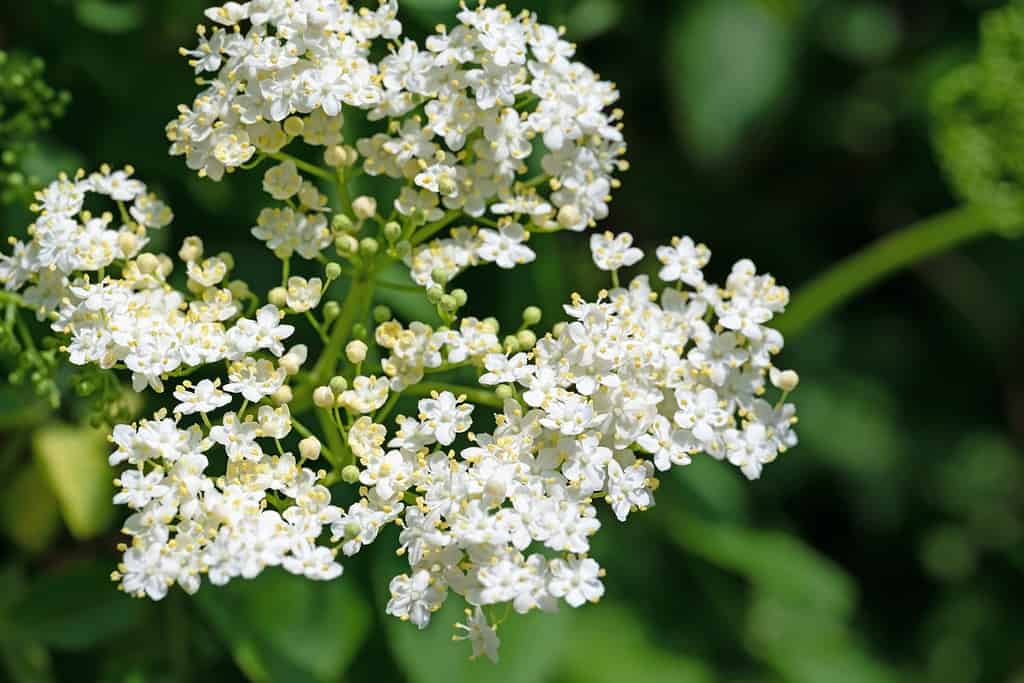Let’s face it, butterflies are one of the most beloved insects of all. In fact, these little creatures are so adored that many gardeners spend their time and energy trying to figure out ways to attract them to their gardens. Luckily, achieving this is easier than you think. Let’s explore six bushes you can plant this season that will be sure to bring a variety of butterflies fluttering into your yard.
1. Milkweed

Planting native milkweed is very important for the well-being of the local flora and fauna.
©Nancy J. Ondra/Shutterstock.com
A wide variety of milkweed plants are appropriate for attracting butterflies, such as swamp milkweed, snowy milkweed, and orange butterfly milkweed. In particular, monarch butterflies seem to be partial to these plants. Although this plant is toxic to many animals, monarch butterfly caterpillars are able to digest it. In turn, if any predator winds up eating monarch larvae or butterflies, they’ll become ill. In this way, this plant serves as both their food source and protection. Mature monarch females lay their eggs on milkweed plants so that their offspring will have a snack waiting for them after emergence. Because of this, adding this plant to your yard will ensure that both mature and juvenile butterflies stay present in your garden all season long. Be sure to research which variety of milkweed is native to the region that you live in before planting.
2. Rose of Sharon

Rose of Sharon bushes are low maintenance and easy to care for.
©Stock for you/Shutterstock.com
If you’re looking for an aesthetically pleasing flower that butterflies love to visit, look no further than the Rose of Sharon bush. These large, flashy flowers attract a variety of pollinators such as butterflies, moths, bees, and even hummingbirds. In addition to being beneficial to many different species, these bushes are also very easy to look after. As long as these bushes have access to direct sunlight and water, they will blossom each year with little intervention.
3. Butterfly Bush

Butterfly bushes are native to Asia.
©iStock.com/EstuaryPig
When it comes to the classic attractors, butterfly bushes take the cake. This bush produces vibrant purple and blue cone-shaped flowers that grow to incredible heights. They grow fast and require little care while adding a wealth of beauty to any garden. With all of these wonderful qualities, there’s no question why this bush has become so popular over the course of time. This bush is so prolific at attracting butterflies, it’s been named after this ability. However, it’s important to note that this plant is invasive in certain areas. Talk to your local wildlife authority to see if you’re able to plant butterfly bushes where you live.
4. Sage

Planting sage provides gardeners with a wealth of benefits.
©iStock.com/Bonnie McCann
Black swallowtails are some of the most elegant and beautiful butterflies in the world. However, these insects are more partial to herbs than others. Because of this, planting sage shrubs can help attract them to your garden. In addition to attracting swallowtails, sage is useful in other ways. For example, sage is medicinally significant. According to a journal authored by Hamidpour et al., “Sage tea has been traditionally used for the treatment of digestive and circulation disturbances, bronchitis, cough, asthma, angina, mouth and throat inflammations, depression, excessive sweating, skin diseases, and many other diseases.” This herb is also commonly used in cooking, which makes planting this bush a win-win for gardeners. While sage is a wonderful addition to your yard, other herbs such as fennel, dill, and mint will also draw certain insects to your home as well.
5. Lilacs

Although you might need to spend some time and effort establishing your lilac bushes, they are easy to care for afterward.
©Joanne Dale/Shutterstock.com
Lilacs are one of the most popular spring flowers ever, and it’s easy to see why. These bushes sprout dozens of vibrant purple blossoms each spring which elevate the look of any garden. In addition to being aesthetically pleasing, lilacs are also well-loved for their signature fragrance. The fact that these flowers help attract a variety of butterflies is just the icing on the cake! In particular, lilacs are the favorite of Tiger Swallowtail butterflies.
6. Elderberry

Elderberries can be prepared in a variety of different manners, but they must be cooked thoroughly to prevent sickness.
©521149/Shutterstock.com
Similar to Roses of Sharon, elderberry bushes are popular with a wide variety of animals. Birds like to stop by these bushes to eat the berries and butterflies and other pollinators enjoy visiting the small white flowers that bloom each spring. However, these bushes are just as useful to humans as they are to animals. Consuming the fruit that elderberry trees bear is thought to help with inflammation and improve immune function. In addition, they are also rich in antioxidants. According to Mount Sinai, “Elderberry may help treat cold and flu symptoms by reducing congestion and possibly making you sweat more. One study suggested that using a standardized elderberry extract, Sambucol, could shorten the duration of flu by about 3 days.” This tree will flower in spring and early summer and grow fruit during late summer and early fall.
The photo featured at the top of this post is © Nancy J. Ondra/Shutterstock.com
Thank you for reading! Have some feedback for us? Contact the AZ Animals editorial team.







